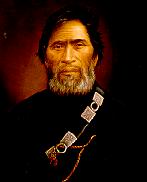

![]()
Art History, NZ, page 5
The Maori still stirred the popular imagination. The earlier ethnological attitude was carried on from the mid-1870's in the portraits by Gottfried Lindauer (image top) and then in the reconstructions of Maori life by LJ Steele.
Around 1900, the portrayal of Maoris accelerated due to the notion that theirs was a dying race. The implications of this impregnated the Maori portraits by Charles F Goldie (image below),
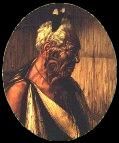
but were countered by the personalised portraits from Fristrom and others; while against the reconstruction of ancient ways were paintings of contemporary Maori life by DK Richmond, Frances Mary Hodgkins and Walter Wright.
During World war One, Mina Arndt returned after studying in Germany, but the sombre expressionistic trend in her paintings was not always appreciated.
In Wellington, Len Lye, as a result of his interest in motion, made wooden constructions with moving parts, but within a few years he too had joined the expatriates. On the Western Front, GE Butler and N Welch were commissioned official war artists.
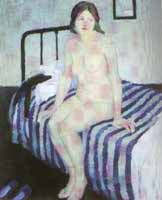
The interest in printmaking shown by Richard Wallwork, AJ Rae and HL Richardson before World war Two, gained considerably with the formation in Auckland of the Quion Club in 1916, among whom were TV Gulliver and Trevor Lloyd.
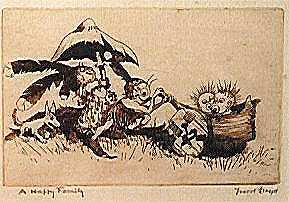
Other printmakers like James Fitzgerald, TM Thomasson and those from among the painters kept printmaking active until the early 1930's.
By 1922 WS LaTrobe, as Superintendent of Technical Education, had in operation his scheme whereby British trained artists were brought out to improve the level of art instruction.
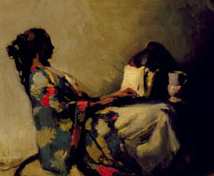
Among the arrivals were Robert Donn, Roland Hipkins, Archibald JC Fisher who, in 1924 took over the directorship of the Elam School of Art, Vivian Smith, Wm Henry Allan, Robert N Field, who, at the art school in Dunedin had considerable influence as a teacher, and in 1929, Christopher Perkins.
Although Herbert Horridge and Alfred Ernest Baxter continued a conservative approach to landscaping painting, the British immigrants, tempered with a post-impressionist background, encouraged a more simplified style.
Such simplification was also present in the work of older painters such as DK Richmond and Margaret Stoddart, who retained some pre-war elements in their work, as well as in the landscapes of HL Richarddson, Esther Hope and Gwyneth Richardson.

Both Grace Butler and Evelyn Page (image above) developed quasi-impressionist styles, but unlike Butler with his mountain views, Page came under fire for her paintings of female nudes in brilliant sunshine.
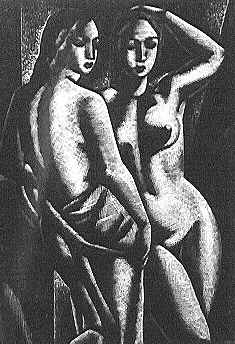
An allied style was employed by Sydney Thompson who spent much of his time in France.
A greater sense of unified style and outlook was developed by AF Nicoll, Richard Wallwork, Cecil F Kelly and others who became known as the Canterbury School.
Cedric Savage shared a similar stylistic approach, but was out of the country for most of this period.
This
Web Directory will always be dynamic ~
all details are flexible and changing